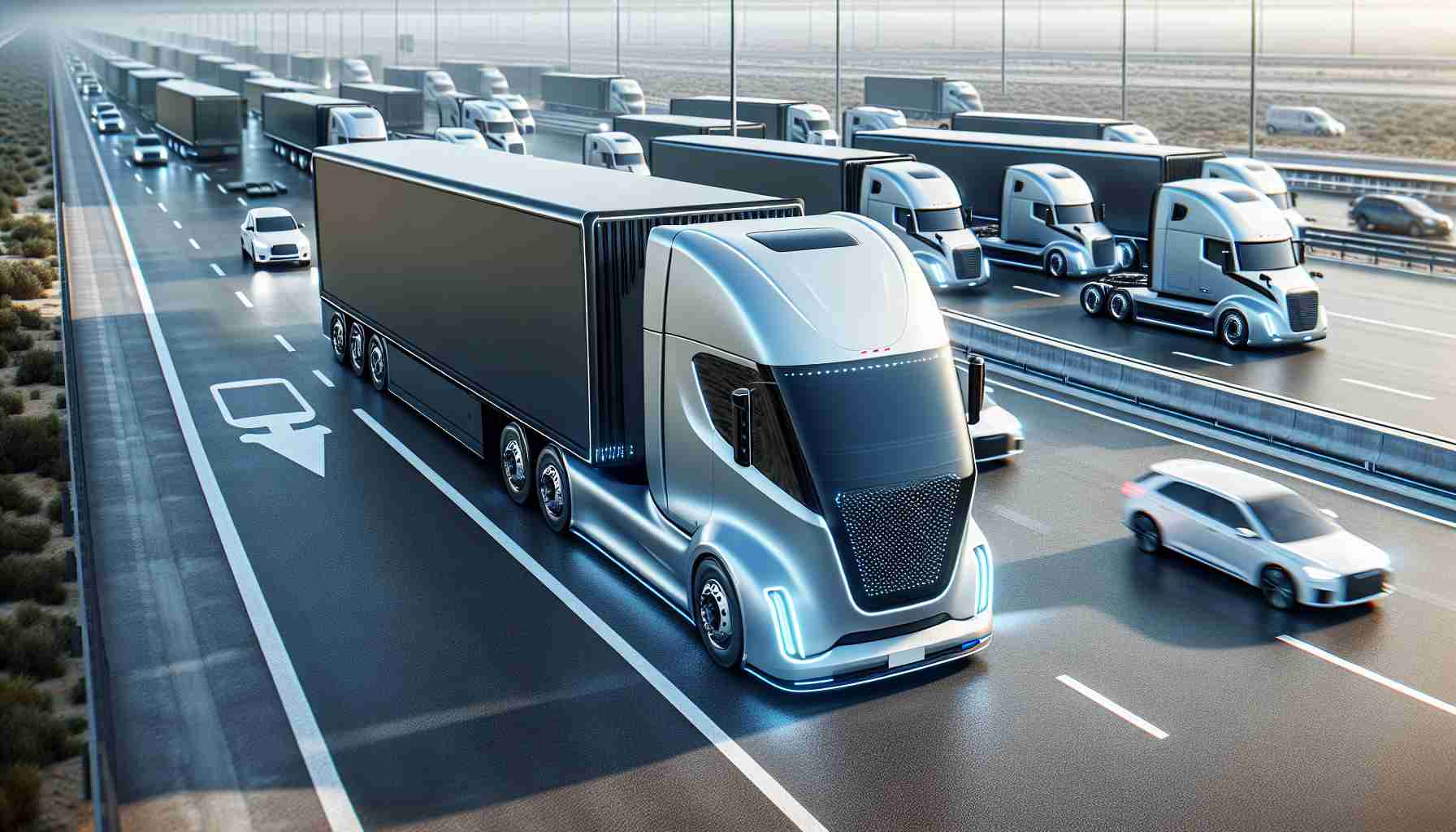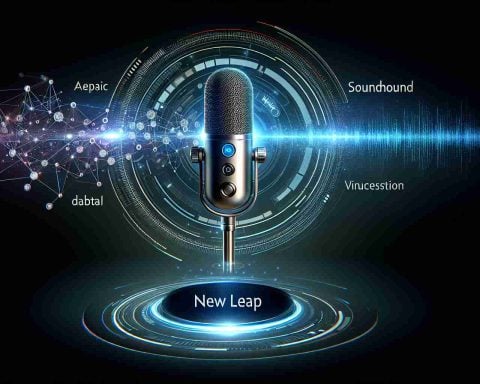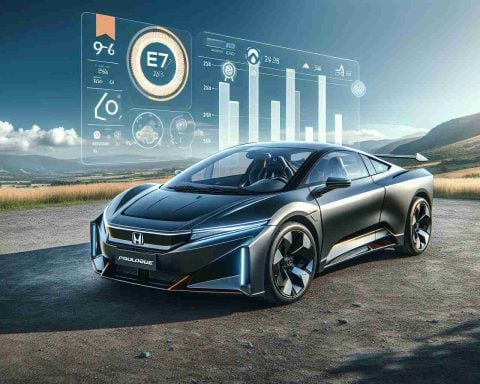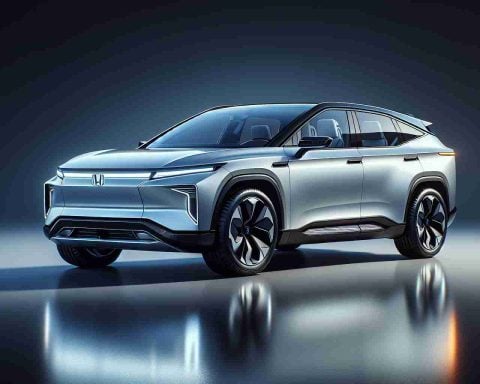- Mercedes-Benz’s eActros 600 electric truck features a 621 kWh battery, promising a range of 500 kilometers and symbolizing a push towards greener transport.
- The transition to electric trucks raises concerns about the significant power demands and potential strain on local energy systems, particularly in Germany with its energy policy challenges.
- Safety issues, such as the risk of lithium-ion battery fires, remain a concern despite their statistical rarity.
- Innovations from companies like DAF with hydrogen engines and advancements in FCEV and autonomous driving hint at a diversified approach to sustainable transportation.
- The industry’s move away from diesel to electric and alternative solutions invites both excitement and significant challenges.
A new chapter in green technology unfolds as enormous electric trucks, long envisioned as part of a cleaner future, inch toward reality. Mercedes-Benz leads the charge, unveiling the eActros 600, a marvel with a 621 kWh battery expected to cover 500 kilometers. Imagine this behemoth, weighing 44 tons, carrying as much cargo as its own hefty battery and body.
Yet, beneath the shiny exterior lies a brewing conundrum. These giants of the road demand colossal power, threatening local energy stability. Germany, already feeling the pinch with sky-high electricity prices after abandoning nuclear, teeters on the brink of an energy quandary. The country faces the challenge of supporting an electrified future while grappling with evolving energy policies.
Furthermore, the promise of safety and environmental friendliness teeters on the edge. Lithium-ion battery fires, though statistically infrequent, linger as a stark reminder of the inherent risks. Even the chairman of CATL, the Chinese battery titan responsible for eActros’s power packs, acknowledged the occasional dangers of these potent cells.
In the wake of such revelations, the automotive world doesn’t pause. At the recent IAA Transportation 2024 in Hanover, both Germany’s MAN and the Netherlands’ DAF showcased their latest electric beasts, each boasting impressive ranges yet accompanied by whispers of uncertainty.
Despite the hurdles, the road to electrification remains compelling. New technologies, like DAF’s hydrogen engine, emerge, signaling a multi-faceted approach to sustainable transport. As industry leaders innovate with FCEV and autonomous driving technologies, the future beckons a landscape where diesel’s heavy plumes give way to whisper-quiet motors. Whether these titans can truly herald a sustainable era of transport is a question that both excites and challenges us.
Are Electric Trucks the Future of Sustainable Transport?
How-To Steps & Life Hacks for Electric Truck Adoption
Transitioning to electric trucks requires strategic planning. Here are key steps for businesses considering the switch:
1. Assess Fleet Needs: Understand your business’s driving patterns and load requirements. Electric trucks like the Mercedes-Benz eActros 600 are ideal for predictable routes due to their impressive range but need frequent recharges.
2. Infrastructure Planning: Evaluate local charging infrastructure. Partner with energy companies to install commercial charging stations if needed.
3. Training: Educate drivers on handling electric vehicles, focusing on efficient driving to maximize range and safety procedures related to battery management.
4. Incentives Research: Explore government incentives for purchasing electric vehicles, which can help offset initial costs.
5. Long-term Evaluation: Regularly review performance metrics to ensure the decision aligns with fiscal and environmental goals. Electric trucks offer significant savings in fuel and maintenance over time.
Real-World Use Cases
Several industries are successfully incorporating electric trucks:
– Logistics Companies: DHL and UPS have integrated electric trucks for urban deliveries, where limited range is not a constraint.
– Retail Giants: Amazon and Walmart utilize electric trucks for their sustainable supply chain goals.
– Municipalities: Cities are using electric garbage trucks to reduce emissions and noise pollution.
Market Forecasts & Industry Trends
The global electric truck market is expected to grow from $1.2 billion in 2021 to approximately $15 billion by 2030, driven by tightening emissions regulations and advancements in battery technology (source: Allied Market Research).
Emerging trends include:
– Increased investment in charging infrastructure.
– Development of battery-swapping technology for quicker turnarounds.
– Growth in the production of Class 8 trucks, suitable for long-haul routes.
Reviews & Comparisons
The Mercedes-Benz eActros 600 is compared favorably with competitors like the Tesla Semi and Nikola Tre in terms of range and load capacity. However, each has unique strengths:
– Tesla Semi: Known for its acceleration and innovative design, offers a range of up to 500 miles.
– Nikola Tre: Focuses on hydrogen fuel cells, promising longer ranges and quick refueling times.
Controversies & Limitations
Several challenges surround electric trucks:
– Energy Demand: High power requirements stress local grids, especially in regions like Germany, struggling with high electricity costs.
– Battery Safety: Lithium-ion batteries, though infrequent, pose fire hazards. Manufacturers are improving safety through better thermal management and battery monitoring systems.
– Range Anxiety: Despite advances, long-haul routes remain a challenge for electric vehicles, necessitating complementary technologies like fuel cells.
Features, Specs & Pricing
Key features of the Mercedes-Benz eActros 600 include:
– Battery: 621 kWh capacity
– Range: Approximately 500 kilometers on a single charge
– Price: While exact pricing varies, initial costs are higher than traditional diesel trucks, with significant savings over time.
Security & Sustainability
Electric trucks provide substantial sustainability benefits. They offer zero emissions and reduce reliance on fossil fuels, aligning with international climate goals. However, the sourcing of materials for batteries, like lithium and cobalt, raises environmental and ethical concerns, necessitating improvements in recycling technologies.
Insights & Predictions
The shift towards electric trucks is inevitable. Future developments may include:
– Solid-State Batteries: Providing lighter, safer, and more energy-dense options.
– Hydrogen Fuel Cells: Offering solutions for longer-haul routes where battery electric trucks may not suffice.
Tutorials & Compatibility
For seamless integration, manufacturers like Mercedes-Benz provide comprehensive tutorials for fleet management systems—assisting companies in tracking vehicle performance and maintenance needs.
Pros & Cons Overview
Pros:
– Lower operational costs.
– Reduced noise and air pollution.
– Aligns with corporate sustainability goals.
Cons:
– High initial costs.
– Infrastructure limitations.
– Dependency on battery life and range.
Actionable Recommendations
For companies and individuals exploring electric trucks, consider the following quick tips:
– Start with a Pilot Program: Implement a small number of electric trucks to assess compatibility with your operations.
– Leverage Government Incentives: Reduce upfront costs by taking advantage of available incentives.
– Invest in Training: Ensure all staff understand the unique attributes and maintenance needs of electric trucks.
For detailed insights into electric vehicle technology, visit the Daimler website. Embrace the electric revolution and position your business ahead of the curve in sustainable transportation.

















